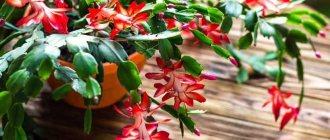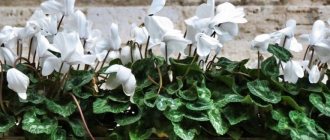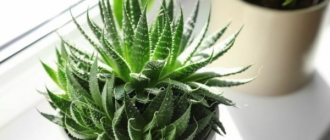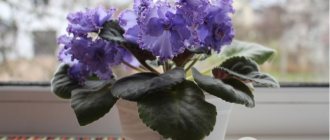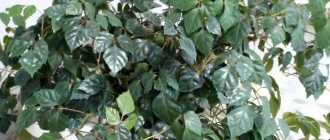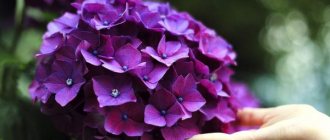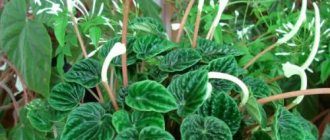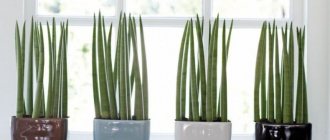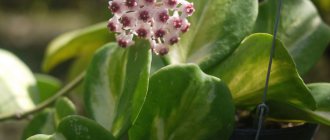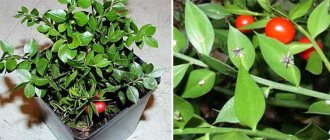Author: Miroslava Danich Category: Houseplants Published: July 22, 2013Last edits: November 16, 2020
indoor vines or climbing indoor plants at home. After all, a real gardener will not tolerate empty walls and will definitely hang at least a couple of flower pots. But vines are not only flowers for decorating walls. Many indoor vines feel great twining around special flower stands and ladders. In this case, the plant is formed in a special way. There are many varieties of indoor vines. There is a whole classification of these colors. But they are united by some general rules of care, which often differ from the principles of growing ordinary plants. Therefore, before you bring a curly green beauty to your home, find out in more detail how to care for the vine at home.
Such similar and different vines
Almost all vines are inhabitants of the humid, warm tropics. They grow very quickly (most of them, anyway), are easily propagated by cuttings and take root quickly. Perhaps that is why gardeners love them so much. For example, a climbing cypress vine, or Quamoclitus pinnate, can grow 2.5 m during the growing season.
Despite the similarity in general characteristics, the vines are still very different. They may be flexible or have a herbaceous stem, or they may become woody as they mature. In addition, they differ in the possibilities of vegetation growth: they can be annual and perennial, evergreen and, conversely, deciduous.
Indoor vines are mostly evergreen and perennial. And this is understandable: who wants to look at a long bare stem all winter. It is herbaceous vines that are grown at home, but flexible or woody ones can be planted in the garden.
- Episcia - care, photos, types
Lianas are also divided into classes depending on the method that the plant uses to attach to the surface during growth. If the vine is attached to the support by roots, then it is a root-climbing vine, if by lateral branches or shoots-tendrils, then it is climbing or tendril-bearing. And the supported vines cling to the support with suction cups.
Most often, amateur gardeners grow climbing vines. Their shoots can be twisted around a support, forming a plant with a beautiful spiral shape.
Among indoor vines there are many favorite flowering plants: Clerodendron, Ivy, Bougainvillea, Passionflower, Monstera, Philodendron, Hoya and many others. For example, I was very surprised when I learned that even among the cacti there are vines.
Growing problems
Diseases are not scary for scindapsus. Flower growers love the tropical guest not only for its not picky nature, but also for its resistance to illnesses. However, the vine can lose all its beauty due to banal mistakes made by the owner. It is impossible to be one hundred percent insured against insect damage. The sooner the problem is exposed, the cause of its occurrence is found and proper treatment is carried out, the higher the likelihood that the “pet” will be saved. If time is lost, but there are intact tops, cut them off and start growing a new plant.
Florist mistakes
Scindpasus is undemanding and after “domestication” it learned to adapt, but growing any plant requires compliance with certain rules, even minimal ones. Negligence and gaps in care are the most common reasons why a “pet” begins to waste away and looks weakened. Problems that a grower may encounter in the process of growing vines, and their causes, are listed in the table.
Table - Florist mistakes when growing scindapsus
| Problem | Cause |
| Leaves turn yellow and fall off | — Nutrient deficiency; - draft |
| Green foliage fades | Too much sun |
| The foliage loses its variegation | Lack of light |
| Leaves curl and dry at the tips | — Lack of moisture; - dry air; - proximity to the radiator |
| Black spots appear on the leaves, then they fall off | — Waterlogging of the soil; - rotting of roots |
| The stems rot | Overflow combined with low temperature |
Most problems are solved by eliminating the root cause. The most difficult thing to save is a plant whose roots have undergone a process of rotting. There is no way to do this without a transplant. If the damage is small, then everything will be fine, the main thing is to remove the rotten parts and treat the cuts with charcoal or activated carbon.
Having noticed that in a month a couple of leaves have turned yellow and fallen off, do not rush to panic and blame yourself for making a mistake in care. First, remember how old your “green pet” is. More than three? A slight “leaf fall” in this case is a natural process: the plant ages.
Pests
Scindapsus is rarely attacked by pests, but no one is immune from unforeseen situations. More often than others you can see the following insects on the vine:
- thrips;
- scale insects;
- aphid;
- spider mite
As a result of the vital activity of insects, the plant loses its decorative effect, the leaves curl and fall off, the stems dry out or become sluggish, growth and branching slows down or stops altogether. The main thing is to detect the enemy in time. Inspect your “green pet” regularly and you won’t miss the problem.
The fight against insects cannot be won without the use of special preparations. For example, Actellik has proven itself well. You need to add ten drops of the drug to half a liter of water, then spray the solution on the leaves and stems using a spray bottle. In case of severe infection, one treatment is not enough: the procedure will need to be repeated after a week. Remember that you can spray the vine with this solution no more than four times.
Improper care contributes to the appearance of insects: too high humidity or, conversely, too dry air, overwatering or prolonged drought are prerequisites for infection. The likelihood of insects increasing if new indoor flowers entering the house do not undergo quarantine, but immediately become neighbors of the vine.
By growing a vine on a windowsill, you get not only a beautiful plant that can transform your interior, but also a useful friend. The leaves of the overseas guest produce phytoncides. These substances kill bacteria that are in the air. The liana enriches oxygen with organic elements, so breathing in an apartment where there is scindapsus is much easier. Eastern sages attribute to the plant the ability to inspire, get rid of laziness, and get rid of depression. In a word, there are many advantages, minimal disadvantages - you still need to look for such ideal “pets”!
Lighting
Most indoor vines like partial shade or even some shade. But some people need brighter light. These are the species that have “variegated”, that is, multi-colored leaves: Scindapsus, Cissus, Syngonium, Ceropegia. Bright light, but in no case direct sunlight, otherwise burns in the form of brown spots will appear on the leaves. The pot with the vine must be turned all the time so that all sides of the plant receive the same amount of illumination, otherwise the vine will stretch to one side and remain lopsided forever.
If you decide to decorate a dark room with a vine, then ivy is suitable for you. Monstera is also suitable, as well as Cissus antarcticus and Rhombicus rhombicus.
Individual approach
Each vine is unique and requires its own special care program. And the easiest way to avoid mistakes is to document the schedule of procedures and the characteristics of the plant. A small plate or tag on the pot with general information about preferences, an indicator of the degree of humidity, a log of fertilizing, watering and replanting is the best way not only to provide the plant with everything it needs, but also the easiest way to identify and analyze your mistakes in a timely manner.
You should take a responsible approach to choosing a plant, not being guided only by impulse or external effect. Lianas, even if we are talking about elegant ampels, are plants that are brought into the house for many years. Studying the information, checking the information provided by the seller, assessing your capabilities and features of the house in comparison with the plant preferences will help you immediately start getting acquainted with the steeplejack correctly. And after observing the quarantine period and keeping it in average conditions, the plant adapts to the interior quickly and painlessly.
The most important aspect of the individual approach is pruning. It is carried out purely on the recommendation for each individual species and after a thorough analysis of the condition of the plant itself. But watering, fertilizing, replanting, and even the choice of conditions should be selected after studying the requirements of a particular plant.
Scindapsus. © Dennis Amith
Watering, humidification, temperature and fresh air
It’s not for nothing that I combined all these parameters into one group - they are all interconnected. For indoor vines, the ideal conditions are moderate temperatures, good ventilation and moist air.
The temperature in winter should not fall below 16°C. I don’t think it can be colder than 16°C in city apartments, but if yours is cooler, you will need to turn on additional heating, but not in close proximity to flowers. In summer, the temperature should ideally not exceed 20-22°C, and the heat must be combated by constantly spraying the plant with cool water. In winter, by the way, you also need to moisten the vines, but the water for spraying should be warm.
watering indoor vines in the morning or evening, but not during the day. And you can spray in the same mode, even 2 times a day. Watering is carried out as the top layer of soil dries. Try not to over-water the plant, especially since under the lush head of leaves the soil can remain wet for a long time. Water for watering indoor vines should not be cold, otherwise the root system may become sick and rot.
If your house is dry, the heating system greatly heats the air in the apartment, then you will have to give up the idea of keeping vines in the house - they will constantly get sick and waste away. I once grew ivy not far from the radiator - it did not grow, but barely survived. And in the summer, when I took it out into the fresh air, the ivy grew and became bushy.
Lianas love fresh air very much. But this does not mean that they are not afraid of drafts. Place the climbing plant under the wall so that the air flow will refresh it, but not make it cold.
And, of course, a common feature of all vines is the need for moist air. You already know how to spray a vine, but indoor vines need a shower at least once a month. It is difficult to remove dust from their leaves, so it must be washed off. If this is not done, spider mites may settle on the plant.
When bathing the vine in the shower, turn the water slightly warm, but keep in mind that the water pressure should not be strong, otherwise you risk breaking the leaves and shoots.
- Paphiopedilum: care, reproduction and types
Features of caring for scindapsus
At home, the liana grows well and pleases with its beautiful exotic leaves, if it is properly placed and provided with the necessary care. Scindapsus are unpretentious, but you need to know some nuances about caring for them.
Lighting and air temperature
The required amount of lighting directly depends on the color of the leaves of the plant. Species with green foliage grow well in partial shade, but variegated forms need more light. However, it is better not to place scindapsus more than two meters from a lighted window. If the vine does not have enough light, it will begin to shed its leaves.
In summer, the optimal temperature for the plant is considered to be within +20...+25 degrees. If the house is cool in winter, then the air temperature should not be lower than +12 degrees. At lower temperatures, scindapsus leaves become limp and covered with brown spots.
The liana is also afraid of sudden changes in temperature and drafts. All these points need to be taken into account when choosing a place for a tropical plant.
Watering and air humidity
When caring for scindapsus, watering should be regular. In the warm season, the soil is moistened after the top layer of soil dries out. That is, approximately once every 4-5 days. If the room is cool in winter, the frequency of watering is reduced to once a week. In the winter season, the earthen ball should dry out by a third. Watering should be done with settled water at room temperature.
With a lack of moisture and frequent drying out of the soil, the leaves will wither and fall off. If you constantly over-moisten the soil in which scindapsus grows, its roots will begin to rot and the plant may die. The leaves can “tell” about excessive watering. In this case, drops appear on their underside. Having seen such a sign, watering should be reduced.
Scindapsus quickly get used to dry air in apartments and houses, however, they prefer more humid conditions. Therefore, it is recommended to regularly spray their leaves and wipe them with a damp sponge, especially if there are heating radiators in the room.
In summer, the vine can be given a warm shower. Before this procedure, cover the top of the pot with cellophane so that the soil does not wash out.
To prevent the tips of the leaves from drying out on the plant, in winter it is placed away from heating devices. To increase air humidity, a flower pot can be placed on a tray with damp expanded clay, pebbles or moss.
Fertilizer and replanting
The scindapsus liana is fed with fertilizers intended for decorative deciduous plants. In summer and spring, feeding is carried out twice a month, and in the fall their frequency is reduced to once every two months.
You should definitely know! Liquid fertilizers for decorative foliage plants need to be diluted twice as much. Their concentration for scindapsus should be half as much as indicated in the instructions.
Young scindapsus are transplanted every year, adult specimens are transplanted once every two to three years. Active growth of the plant begins in February-March, when the flower should be replanted.
The pot should not be very deep. You can choose a wider container and plant cuttings to the main plant, thereby creating a picturesque wide shrub.
The bottom of the pot must be filled with drainage. Soil for scindapsus can be purchased at the store or prepared yourself. To do this, mix:
- humus – 1 part;
- peat – 1 part;
- leaf soil - 1 part;
- sand - 1 part.
Before use, the soil mixture is spilled with a pink solution of potassium permanganate.
With good care and proper placement, scindapsus grow quickly. To give the vine a more decorative appearance, it requires regular pruning. This procedure will also encourage the plant to form side shoots. As a result, after pruning, you can get a beautiful and lush bush.
Scindapsus stems can be attached to a moss-covered support, bamboo trellises, or plastic arches.
It is best to use supports that are tied with moss. They will need to be moistened from time to time. In this case, the aerial roots of the vine will receive additional moisture and nutrition, as a result of which the bush will grow even more. Soon the support will be almost invisible due to the exotic leaves.
You can plant scindapsus in a hanging pot and use pruning to form it into a not too long hanging plant.
Soil and replanting vines
If you bought a vine in a temporary pot, then within two weeks it will need to be transplanted to a permanent place of “residence”. It is better not to replant an indoor vine, but to transfer it with a clod of earth, so as not to injure the roots of the plant. And when replanting, try to hold the plant so as not to break the shoots. It is better to replant the vine with an assistant.
The soil for indoor vines needs to be fertile, but light, with a neutral or slightly acidic reaction. You can use a mixture of turf, humus and leaf soil. Or you can take ready-made mixtures: “Saintpaulia”, “Begonia”, “Cactus-plus”.
Some vines grow so low above the pot that the soil is not visible, but since they like loose soil, use a thin, long stick to loosen the soil in the pot.
As for feeding, vines need it, like other plants. If you fertilize them, they grow faster, and their leaves are juicier and thicker, and if you neglect feeding, the vines can “go bald.” As a fertilizer, you can use mullein diluted with water in a ratio of 1:10, or you can feed the vines with complex mineral fertilizer.
Home care
Despite its unpretentiousness, scindapsus, like other indoor plants, requires standard care: watering, fertilizing, replanting. But since it has the shape of a vine, you will have to take care of support.
Watering and humidity
Scindapsus needs regular, but not too much watering. The main thing is to make sure that the soil has time to dry out between them. In winter, it is enough to water such a plant once every 1-1.5 weeks.
This flower comes from the tropical jungle, so it needs high humidity. In winter, never keep the flower near heating appliances. Regularly rinse the leaves with warm, clean water and spray with a spray bottle.
Reproduction and planting of dracaena trees at home
Fertilizer and pruning
Once every 2-3 weeks, scindapsus should be fertilized. To do this, purchase a special mineral fertilizer for liana-like plants at the flower shop.
This flower grows quite quickly, reaching large sizes. Regular pruning will help stop such rapid growth, and pinching will give the vine a more neat and flowery appearance, because it will stop wasting energy on lengthening the stems and will begin to build up green mass.
Liana support
Regular pruning allows you to get a lush bush with neat stems. It does not in any way affect the health of the scindapsus, but some gardeners refuse this procedure because they are interested in growing vines. In such cases, you need to take care of support for the climbing plant.
For young specimens, a small arch or ladder, which is installed next to the pot, is enough. For adult vines, it is worth preparing a thick plastic tube with holes. If you fill it with soil and direct aerial roots into the holes, you can provide the flower with additional nutrition.
Propagation by cuttings
Scindapsus, like most climbing plants, is propagated by cuttings. To do this, use apical cuttings that have at least 3 leaves. The procedure is quite simple:
- Using a sharp knife, separate the cuttings from the mother plant; the cut should be oblique.
- Treat it with Kornevin or any other drug that stimulates the development of the root system.
- Place the cuttings in a container with water or moist soil.
- After about 10-15 days, the first roots will appear. In order for this to happen, maintain the room temperature at 21-22 degrees Celsius and provide the cuttings with good lighting. Don't forget to water the soil regularly.
- When the young plants have roots, it is time to transplant them into separate pots. To do this, prepare a special substrate - mix leaf soil, moss, river sand and peat.
- After 1-1.5 months you can apply the first fertilizing.
Plant transplantation
Young plants should be replanted every year, adults - once every 3-4 years. It is best to carry out this procedure during the period of active plant growth, namely: in late February - early March. To do this, take a wide pot in order to be able to plant additional cuttings to the scindapsus in the future. This will allow you to form a lush decorative bush.
A fully grown vine will be a chic decoration for any room. And taking into account the unpretentiousness of this plant, it will not be difficult at all to have such a living decor at home.
Formation of indoor vines
Giving the growing vine direction and shaping the exterior is a very important moment in caring for the plant. And since you have started a vine, you will definitely need a support, potted or wall-mounted. Climbing plants can form themselves by entwining a support or climbing a wall, but it’s better if you do this. To do this, the branches that you want to grow need to be pinched in the area of the apical shoot so that lateral shoots will appear.
If you want to get a long central braid branch, then constantly wrap it around the support in the direction you want and carefully fix it - I use small children's crab hairpins for this.
If your indoor vine (for example, Passiflora) crawls on its own using tendrils, control its progress and remove excess tendrils in time so that the vine does not stray from its route.
Loosening, as for garden plants
For vines growing indoors, the soil should be loosened periodically to prevent compaction and maintain optimal air and water permeability. Regeneration of the structure of the top layer of the substrate is especially important for large plants that are not replanted every year.
Over time, in the absence of scarification, actively growing vines suffer not only from soil compaction and even crust formation, but also from soil contamination. With regular loosening, you can prevent problems with the soil and remove plant debris in a timely manner. Weakening the substrate for indoor vines has its own rules:
- This should be done superficially, to a depth of no more than 1.5 cm;
- Very carefully loosen the soil around the sides of the pot, being careful not to disturb the shoots or roots.
Stephanotis. jmchapp
Rejuvenation and reproduction
Many indoor vines shed their lower leaves as they mature, leaving behind a bare vine with a dozen leaves at the end. This happens especially often in herbaceous vines after winter. In this case, the plant needs rejuvenation: the apical cutting with leaves is cut off and rooted. The old plant is cut to almost half: this way it will branch more strongly. The sections must be treated with a weak solution of potassium permanganate.
The apical cutting, cut from an old plant, can be placed in water so that it takes root. But many indoor vines (like Ivy) have aerial roots, and therefore the cuttings can be immediately dug into the ground.
For quick rooting, a cutting cut is treated with “Kornevin”, or folk remedies - aloe juice or Kalanchoe juice.
In addition to the vegetative method, vines are propagated by seeds. For example, I sowed Passionflower and got very good results in the form of strong shoots. But I do not recommend propagating other types of vines in this way.
In addition to seed propagation and rooting of apical cuttings, some vines can be planted using a propagation method such as dividing a bush.
Home care
The plant is unpretentious in care. Therefore, even a novice florist can cope. You just need to follow certain rules.
Temperature
Scindapsus is a heat-loving plant. The optimal temperature is 19–25 degrees. At higher temperatures, leaves fall off, and at low temperatures, rot appears on the roots and fungal diseases occur.
Lighting
It is recommended to place the pot with the vine on the eastern or western sides of the apartment.
On southern windowsills, the plant must be shaded from direct sunlight.
And in dark rooms, install additional artificial lighting.
For variegated types of lighting, more lighting is needed, since with a lack of light, the variegation ceases to be noticeable.
Watering and air humidity
During the growing season, the plant is watered frequently and the soil is not allowed to dry out. At the same time, do not allow moisture to stagnate in the pot, otherwise the roots will begin to rot. Because of this, water is drained from the pan. In the autumn-winter period, watering is reduced.
The water should be settled and at room temperature.
Scindapsus needs a high level of air humidity. On hot sunny days and during the heating season, the plant is sprayed or the leaves are wiped with a damp cloth every day.
If the plant is grown in wall pots, then moisten it with sphagnum moss. It is placed around a pot with a vine, and then placed in a larger container.
In winter, scindapsus is not placed next to central heating radiators.
Reproduction
Scindapsus, like most flowers, can be propagated at home. This process does not take much time and even a beginner can handle it.
By cuttings
For this method, apical cuttings with 3 leaves are used. The process itself consists of the following steps:
The cuttings are cut from the mother plant using a sharp knife. The cut site is treated with Kornevin to stimulate the development of the root system. The cut cuttings are placed in a bowl with water or moist soil. After 9–14 days, the first roots appear. During their growth, the temperature is maintained at 21–22 degrees and provided with good lighting. After the roots appear, the young plants are transplanted into separate containers with soil. After 1–2 months, the first fertilizers are applied. Then they are cared for as if they were an adult plant.
Another way of propagating scindapsus is by layering. To do this, the top of the stem with several nodes is placed in a bowl and covered with earth. After the aerial roots have taken root, the cuttings are separated from the parents and a little soil is added.
Top dressing
With the beginning of spring, the plant begins to be fed. Fertilizers are applied once every 2 weeks, until the beginning of autumn. In winter, scindapsus is fed once a month only if it has grown strongly and has developed long shoots. For fertilization, mineral fertilizers for decorative foliage plants are used. Dilute them in water according to the instructions. Some gardeners feed it by brewing regular black tea.
Transfer
Young plants are replanted every year, adults less than once every 3–4 years. The procedure is carried out at the end of winter and beginning of spring. To form a lush bush and further plant additional cuttings, take a wide pot, 3–4 cm larger than the previous one, preferably ceramic.
To do this, mix peat and leaf soil, humus, sand and perlite in equal proportions.
Replant scindapsus carefully so as not to damage the shoots.
Before planting in a new pot, inspect the roots; if there are damaged areas and rotten areas, they are cut off with a knife, previously wiped with alcohol.
A drainage layer is placed at the bottom of the new pot. After transplantation, the plant is watered and fed only after a month.
Trimming
Scindapsus grows quickly, and some shoots become very elongated, so they need to be pruned. The branches are shortened by 1/3 of their length, and dry ones are also removed. The procedure is carried out with a sterile knife, and the cut site is treated with crushed activated carbon.
If the grower wants the plant to grow in length, then special supports in the form of a ladder or arch are installed next to the pot.
Diseases
Almost all vine diseases are associated with water imbalance.
If you notice that the plant has begun to weaken and lose leaves, then it is quite possible that the reason is that its roots are rotting. This happens when waterlogging occurs and the pH of the soil shifts to the acidic side. But indoor vines shed leaves and if the air humidity in the room is too low, the leaves dry out just before they fall.
- Dieffenbachia - care, photos, types
Dry air and lack of moisture lead to spider mites, aphids and scale insects growing in indoor vines. It is difficult to get rid of them: you will need to spray them twice with Fitoverm or Actellik insecticides.
So it’s better to prevent the disease by following all the rules of agricultural technology for vines, and then any of them will become a decoration for your home.
Hygiene is important, regardless of size
Despite the numerous varieties of vines, like all other indoor plants, they require care, which includes periodic inspection of leaves (on both sides) and shoots, spraying, showering, bathing, cleaning, ventilating the room, avoiding drafts. Any deviations - dark spot, change in color, lethargy lead to the death of the plant.
Any deviations - dark spot, change in color, lethargy lead to the death of the plant
Monstera
A spectacular flower with huge carved leaf plates up to half a meter in length and width. At home, it is better to grow monstera in spacious rooms. The thick stem has many hanging roots. With them, the monstera masterfully clings to any bulges. For this reason, the plant must be provided with reliable and strong support. Loves moist soil and good, but not too bright light. The monstera reveals all its beauty in the fifth year of its life.
Mandevilla
The flower, although attractive, is capricious. The length of the shoots can reach four meters. The leaves are thick, shiny, pointed. The flowers of the vine are large and funnel-shaped, with five petals. They love this vine for its buds, each of which lasts up to ten days. The period when the capricious mandevilla pleases with flowering is also quite long.
Some varieties of these vines have a pleasant aroma. With proper care, flowering lasts from spring until late autumn. The plant does not tolerate cold at all. A temperature of 14 degrees can destroy the beauty. The rest of the care is quite prosaic: good light and properly regulated watering.
If mandevilla is trimmed regularly, it will grow into a lush bush covered in flowers. However, free-hanging plant vines are beautiful in their natural form.
Hedera
Usually this plant is called simply - indoor ivy. This flower has carved delta-shaped leaves and strong creeping shoots. The plant is not considered difficult to care for. It likes moderate shade and moist soil. However, you should not overwater the hedera; a lump of soil that is too wet will destroy the plant.
This type of ivy has small growths on its stems. If the stem reaches a favorable place, then clinging roots appear from these growths. Ivy grows where this root falls. Be careful. If, having decided to get a hedera, you hang it next to it or place a pot with another plant, then the ivy will not behave very modestly. He can “reach” with a branch to the soil of a neighboring pot and “land” safely in it.
In nature, this plant entwines entire slopes of rocky hills and even the mossy walls of ancient houses. It grows very quickly and hides bare spots. If you need to decorate such a corner in your room as soon as possible, ivy will cope with this task and will not cause any difficulties.
Don't wait for the hedera to bloom. The plant produces buds only at a fairly advanced age (10-13 years). No room is conducive to such a long life of this ivy.
Hoya
Often, beginning flower growers purchase scindapsus, which was discussed above, under the guise of Hoya. And all due to the fact that the plant has equally dense and wide leaves. Otherwise they are very different.
The second name of the flower is wax ivy. This is what people called hoya for its flowers and glossy leaves, covered with a waxy coating. There is hardly a person passionate about plants who, having once seen the buds of wax ivy, would not want such beauty for his collection. For some, flowering comes easily, and hoya pleases with clusters of waxy flowers almost continuously. And someone can hardly achieve the blossoming of one or two brushes.
The stems eventually reach a length of up to six meters. The plant tolerates both dry and humid air. Small flowers are collected in lush umbrellas. Some clusters (or umbels) contain up to fifty small buds with five sharp petals. The aroma emanating during the flowering of the beauty is dizzying in the literal sense of the word. It's very bright. Therefore, under no circumstances should a flowering plant be kept in places where people sleep. East windows are the best place to grow hoya. Here it has enough sunny color for rapid growth and lush flowering, and at the same time the foliage does not suffer from sunburn.

